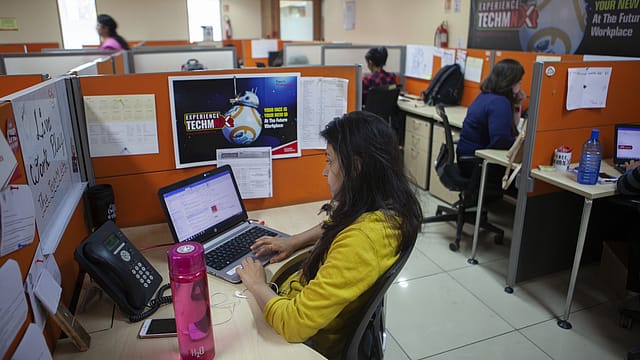Indian women more employable than men; guess how many are in workforce!
ADVERTISEMENT

Organisations across the board are advocating the need for their workforce to mirror their consumers (build organisations with equal representation of men and women as well as other forms of diversity), but the big challenge is to find employable women talent. According to a recent World Economic Forum report, India has dropped 28 places and ranks 140th among the 156 companies in terms of female participation in the workforce. While the pandemic has forced more women to exit the workforce due to family compulsions, those who want to get back aren't skilled for many of the new-age job opportunities.
However, the recent Wheebox India Skills Report gives a ray of hope. According to the report, the percentage of employable women has gone up from 41.25% in 2021 to 53.28%. And, in 2023, it is expected to stay stable at 52.80%. In fact, the rate of employable women has been consistently higher than employable men. The overall employability rate for men went up from 34.26% in 2021 to 47.28% in 2022.
In India, the overall young employability has improved to 50.03% over the previous year. The age range with the highest employability was found to be between 22 and 25 years old, with 59.7% of the resources across top 10 cities in this age range being found highly employable.
Coming back to employable women, the largest concentration of female employable resources is found in Rajasthan, Uttar Pradesh, and Andhra Pradesh, whereas the highest concentration of male employable assets are in Odisha, Delhi, and Jammu & Kashmir. Though the percentage of employable women is high, only 33% (67% in case of men) are participating in the workforce. The Wheebox report says many women in regions like Rajasthan and Odisha have fewer jobs despite being more qualified than their male counterparts.
January 2026
Netflix, which has been in India for a decade, has successfully struck a balance between high-class premium content and pricing that attracts a range of customers. Find out how the U.S. streaming giant evolved in India, plus an exclusive interview with CEO Ted Sarandos. Also read about the Best Investments for 2026, and how rising growth and easing inflation will come in handy for finance minister Nirmala Sitharaman as she prepares Budget 2026.
Uttar Pradesh for instance, has 46.51% of highly employable females but they are not part of the organised workforce. Rajasthan, on the other hand, has the highest percentage of employable female resources but the lowest percentage of employable men, not even featuring in the top 10 for available male talent.
The need of the hour for organisations across the board is to invest in skilling and reskilling of women talent and more importantly create infrastructure and the congenial environment so that they don't exit the workforce. The likes of HUL, Deloitte and Loreal already have programmes that enable their former women employees to get back to the workforce. However, it is the medium to small-sized companies that especially need to focus on getting more women into their workforce. The pandemic saw women exiting the workforce of medium and small-sized companies.
According to the report, the sectors that would be hiring the most in the coming year are automotive, engineering and internet business. The report also points out that the courses most in demand in 2023 will be B.Com and MBA with the most employable talent at 60.62% and 60.1% respectively. BE/B.Tech domain candidates are the third most employable, in the domain-wise employability category, with employability being 57.44%. According to the study, the demand for skilled labour is being driven by the BFSI, pharmaceutical, e-commerce, and IT/ITES sectors. Freshmen hiring in these fields is projected to increase by 20% in 2023 compared to 2022.
